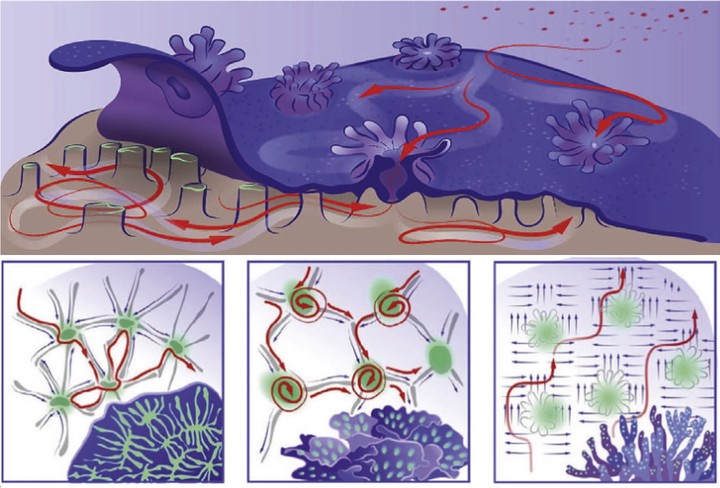



Reef-building corals are endangered animals with a complex colonial organization. Physiological mechanisms connecting multiple polyps and integrating them into a coral colony are still enigmatic. Using live imaging, particle tracking, and mathematical modeling, we reveal how corals connect individual polyps and form integrated polyp groups via species-specific, complex, and stable networks of currents at their surface. These currents involve surface mucus of different concentrations, which regulate joint feeding of the colony. Inside the coral, within the gastrovascular system, we expose the complexity of bidirectional branching streams that connect individual polyps. This system of canals extends the surface area by 4-fold and might improve communication, nutrient supply, and symbiont transfer. Thus, individual polyps integrate via complex liquid dynamics on the surface and inside the colony.